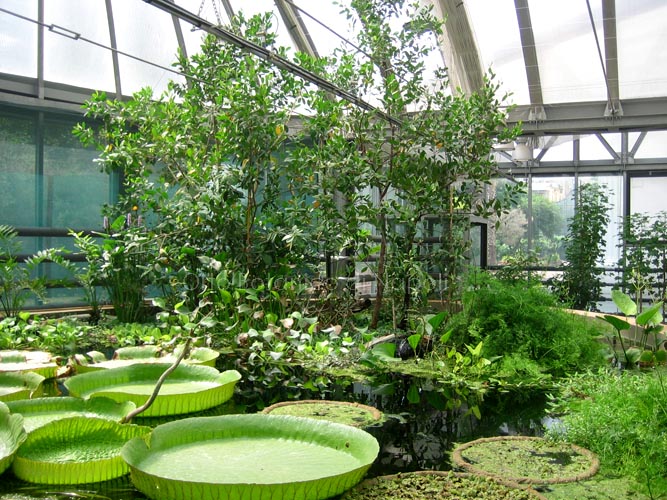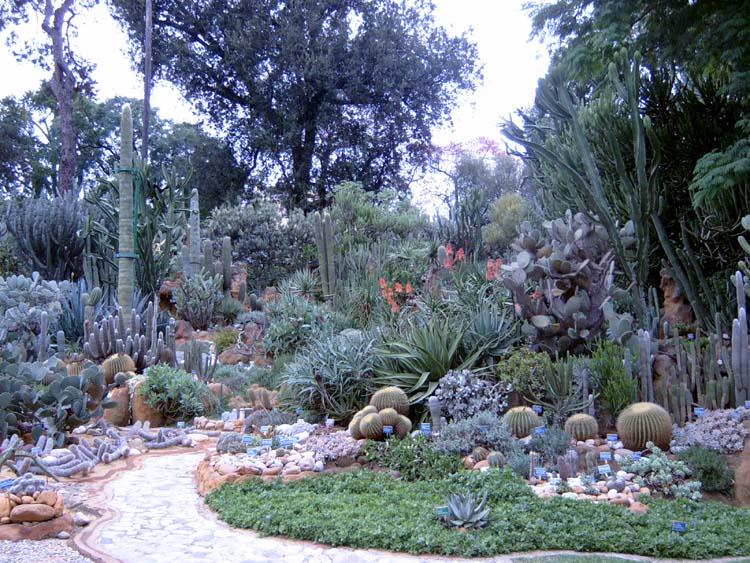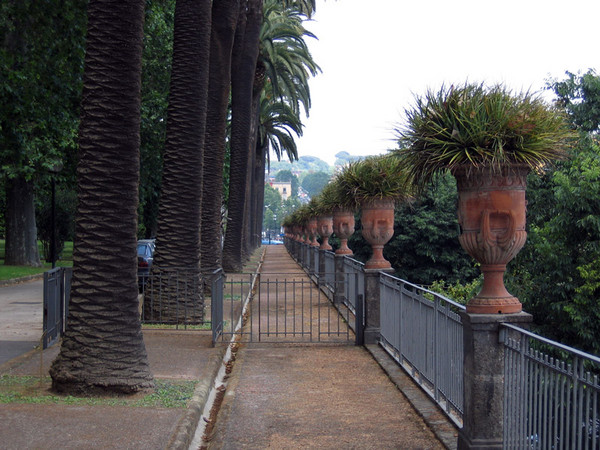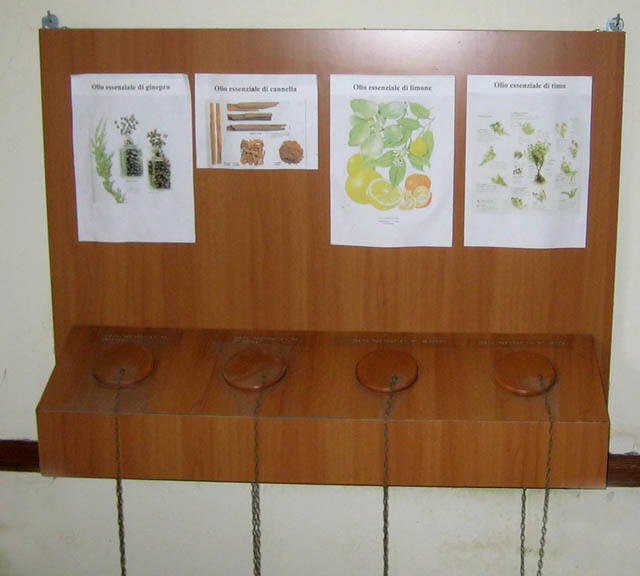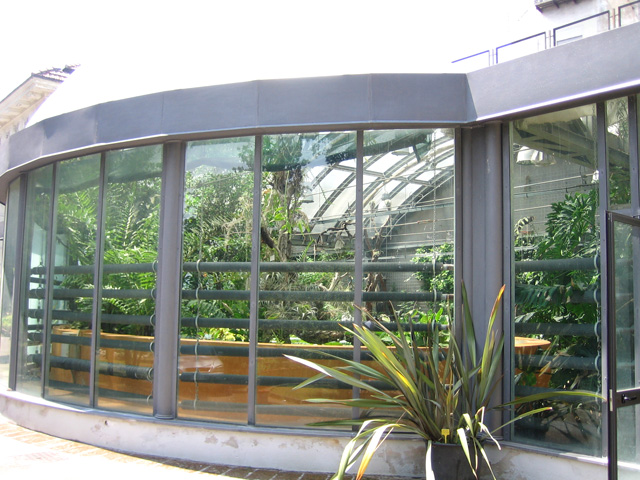
Orto Botanico di Napoli
This post is also available in:
 Italiano (Italian)
Italiano (Italian)
The botanical orchard of Naples was founded with a decree of 1807 signed by king Joseph Bonaparte, brother of Napoleon. The aims behind the new structure’s realisation were pointed out inside the decree: it was destined to ”istruzione del pubblico e alla moltiplicazione delle spezie utili alla salute, all’agricoltura e all’industria”. The project was realised by the architects De Fazio and Paoletti. Michele Tenore became the Orchard’s director in 1810. He was passionate about botany and enriched, during his 50 years of direction, the collections of the orchard by bringing the number of the cultivated vegetal species nearly to 9.000. After the Second World War, thanks to the scholar Aldo Merola (1963-1980), a complex of greenhouses of 5000 mq was realised and the collections, which had been depleted, were remarkably incremented.
Nowadays, the total surface of the Botanical Orchard has an extension of 12 hectares on which there are about 25.000 specimen, grouped in collections according to ecological, systematic and ethnobotanical criteria.
The collections
Citrus grove: Citrus deliciosa, Citrus volkameriana and Severinia buxifolia described for the first time by Neapolitan botanists, Poncirus, Microcitrus, Fortunella e Murraya.
Arboretum: Zelkova carpinifolia, whose trunk has a base circumference of about 5 m, Melaleuca decussata, Parrotia persica, Cordia martinicensis and Cinnamomum glanduliferum, species represented by majestic specimens.
Magnoliophyta area: Poaceae, Fabaceae, Lamiaceae and Asteraceae.
Pinophyta area: Cupressus dupreziana, Pinus leucodermis and Abies nebrodensis, endangered species, Metasequoia glyptostroboides and Wollemia nobilis, true living fossils.
Bulbous, tuberose and rhizomatous plants: Liliaceae, Iridaceae, Amaryllidaceae and Orchidaceae.
Desert: Cactaceae, Euphorbiaceae, Aizoaceae, Crassulaceae, Aloaceae, Agavaceae, Vitaceae, Geraniaceae, Asteraceae.
Filiceto: Selaginella spp., Equisetum spp., relict entities Woodwardia radicans. Asplenium bulbiferum, Cyatheaspp. and Dicksonia spp.
Mediterranean Scrub: Arbutus unedo, Ceratonia siliqua, Olea oleaster, Smilax aspera, Spartium junceum and many more.
Mangrove swamp: dedicated to Alvarado’s lagoon, one of the most productive estuary-lake systems of the oriental part of Mexico’s Gulf (Rhizophora mangle, Avicennia nitida, Laguncularia racemosa, Conocarpus erectus).
Palm grove: Washingtonia robusta, Jubaea chilensis, Syagrus romanzoffiana, Trithrinax campestris, Erythea armata, Brahea edulis, Chamaedorea spp., Sabal spp., Chamaedorea desmoncoides.
Beach: Cyperus Kalli, Calystegia soldanella, Pancratium maritimum, Eryngium maritimum, Otanthus maritimus, Cakile maritima.
Peat bog: Carex flava, Carex davalliana, Juncus acutus, Lysimachia nummularia, Menyanthes trifoliata, Droseraspp.
Tanks: Myriophyllum spicatum, Iris pseudacorus, Zantedeschia aethiopica, Nuphar lutea, Nelumbo nucifera, Lemna minor, Azolla filiculoides.
Experimental Section of medicinal plants: nowadays, it hosts a collection of ethnobotanic vegetation, divided in three sections: the exhibition area, the experimental fields and the grove.
Plants quoted in the Bible: Olea europaea, Cupressus sempervirens, Cyperus papyrus, incenso (Boswellia carterii), myrrh (Commiphora spp.) Christ thorn (Paliurus spina-christi).
Area for blind people: rosemary (Rosmarinus officinalis), sage (Salvia officinalis), oregano (Origanum vulgare), basil (Ocimum basilicum) garlic (Allium sativum), Melissa officinalis, Achillea millefolium, Artemisia absinthium.
The tropical greenhouse Paolo De Luca hosts numerous species hailing from America’s tropical areas, among which a mangrove small wood; it is possible to find here the spectacular Victoria cruziana, a water lily with wide leaves with diameters also of 200 centimetres, which are laid down on the water surface. Its flowers are big and change colours during the day.
This post is also available in:
 Italiano (Italian)
Italiano (Italian)
Contatti
Via Foria, 223 - Napoli(NA)
081 2533937
robnap@unina.it
http://www.ortobotanico.unina.it
Altre info
Visite su prenotazione dal lunedì al venerdì
09:00-14:00
